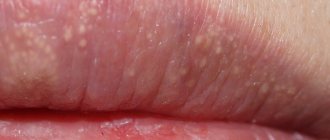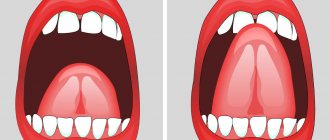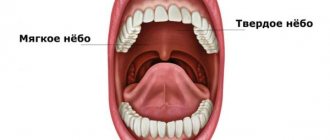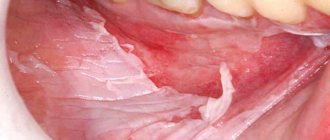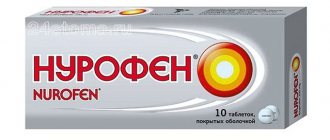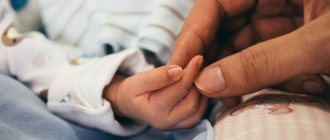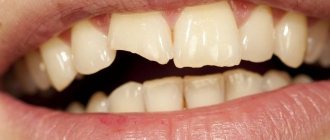A newborn baby is a big responsibility for young parents. When visiting a pediatrician, parents usually ask a lot of questions. Especially if the child is the first. In my personal top list, feeding and colic take first place. Second - rashes!
In photographs on social networks, babies have clean, rosy cheeks and an angelic smile. And in life, redness, pimples, peeling and other unexpected things appear on the skin. Moms are not ready for this. They get scared and start looking for the reason. Neighbors advise you to follow a diet, grandmothers complain about “bad milk.” If you are unlucky, the doctor will scare you with allergies or prescribe tests, half of which will turn out to be unnecessary.
Let's try to figure out which skin problems in infants do not require treatment and are normal in infancy, and which do not. Let’s agree right away: any rash should be examined by a doctor in person. A diagnosis cannot be made from a photograph, because the doctor examines the elements of the rash, touches it by touch, and sometimes special diagnostic tests are needed. In doubtful cases, the pediatrician gives a referral to a dermatologist.
The information below is given so that young mothers stop being afraid of every pimple, understand conditions that do not require medical attention, and understand when to take their child to the pediatrician.
What does a newborn look like?
If the birth goes well, immediately after the birth of the newborn baby, the mother is placed on her stomach. His skin can be bright pink, or it can be pale, his hands and feet have a bluish tint. This scares young mothers if they have heard or read something about hypoxia and cyanosis before. But if the doctors in the delivery room are calm and do not provide resuscitation measures, then this is a variant of the norm. A healthy child can be like this in the first minutes of life. In addition, the newborn's body is covered with vernix - the baby looks as if it has been smeared with cream cheese. And this is also normal, although unattractive. Lubricant plays an important role in protecting the skin from germs, so the baby’s skin is only lightly blotted without being completely wiped.
5-10 minutes after birth, the newborn’s skin becomes bright pink, almost red. This is a normal condition - physiological erythema . The air pressure is less than the pressure of the fluid in which the baby was in utero. When the skin ceases to experience resistance, blood actively flows to it. The body gets used to the new form of life. Gradually, the blood vessels will narrow, and the skin will become its usual pink color by the end of the week in full-term babies and after 2-3 weeks in premature babies.
Marbled leather
During the first month of life, a baby's skin sometimes looks marbled. A uniform mesh pattern of white, purple, and reddish spots is the reaction of skin vessels to cold. Therefore, this phenomenon is most often noticed during swaddling. If the marbling is symmetrical and disappears when warmed, then there is no cause for concern. In other cases, it is worth discussing this symptom with your pediatrician so as not to miss the early diagnosis of diseases of the heart, lungs or skin itself.
Peeling
On the second or third day after birth, the newborn’s skin begins to peel off. Peeling is observed in everyone, but to varying degrees of severity. Most severe if the baby is post-term. The reason is the same restructuring of the body to exist in the air. The skin loses moisture, and the top layer gradually peels off. Physiological peeling does not require treatment and goes away on its own within a few days.
If the peeling is profuse and leads to deep cracks, the skin is lubricated with special moisturizers - emollients. In case of pronounced peeling, it is necessary to exclude congenital skin diseases such as ichthyosis, hyperkeratosis and others.
Erythema toxicum
By the second or third day of life, 70% of full-term newborns develop a small red rash on the skin. Rarely, this condition occurs in premature babies. First, spots appear, and within an hour a yellow bump 1-2 mm in size forms in the center. Elements of the rash are located on the face, torso, arms and legs, and can merge with each other. The cause of erythema toxicum is unknown, but the rash goes away without treatment in 1-7 days and is not dangerous.
If the clinical picture is atypical or other symptoms are present, the doctor will prescribe additional examination to rule out other causes of the rash, such as infection.
Rash on a child's legs and arms
RASHE IN A CHILD ON THE LEGS AND HANDS WITHOUT FEMPERATURE, WITH FEMERATURE, ITCHES, DOES NOT ITCH
Children are the most beloved, defenseless people. The health of the baby sometimes depends on adults. They need our attention first. Children's skin is still imperfect and very susceptible to various infections. Thus, the appearance of a rash on the arms and legs may be an innocent manifestation, or it may be a signal of a dangerous disease. Below we will consider why a rash may appear in a child and how to act in this situation.
Rash - what is it?
What is this phenomenon? A rash is a pathological change in the skin and mucous membranes that differs from normal skin in appearance, structure, and color. It can be primary or secondary, that is, appear at the site of previous rashes. The combination of primary and secondary elements determines the picture of the rash in the disease. This may be a reaction to some allergen, or it may turn out that the rash is a sign of some disease.
Kinds
It turns out that rashes come in different natures and types. Primary and secondary rashes are distinguished. This is what a rash happens on a child’s legs and arms:
- The tubercles do not have a cavity, are located deep in the dermis, up to 1 cm in diameter. At the same time, the color and texture of the skin is different. They can leave scars and develop into ulcers.
- Blisters are without a cavity, have blurry outlines and are pink in color. Appear due to swelling of the papillary dermis. They pass without a trace, they itch.
- Papules or nodules - do not have a cavity. They may or may not be inflamed and their color has changed. They pass without leaving a trace
- Bubbles - have a bottom, a tire, a cavity. Once they are opened, erosion can occur.
- Pustules or pustules have pus inside. May be superficial or deep.
- Roseola appears as irregularly shaped pink spots. When the skin is stretched, the stain disappears.
If the rash appears again, then the following may form:
- Scarring.
- Abrasions.
- Cracks.
- Scales.
- Erosion.
- Ulcers.
Diagnostics
If a rash appears on your child’s legs and arms, you should urgently seek help from a pediatrician and dermatologist. First, the doctor should carefully examine:
- View.
- Form.
- Color.
- Quantity.
- The nature of the rash.
- The location of the rash is also important.
Next it turns out:
- Presence or absence of fever.
- What infectious diseases have you suffered?
- What hereditary diseases are there?
- Tendency to allergies.
- Photosensitivity.
As a rule, a rash is not the underlying disease, but is a symptom of some disease. It is a sign that a malfunction has occurred in the body. To determine the cause of this manifestation, the doctor prescribes tests. First of all, a blood and urine test. It is also possible to analyze the secretion of ulcers. After examination and analysis, the doctor prescribes treatment. What could be the reasons why a child has a rash on his legs and arms?
Sources of the problem
For a child’s body, a rash is a very important symptom of certain diseases, so consulting a doctor is important. The reasons for this may be the following:
- Allergic diseases.
- Infectious.
- Parasitic infections.
- Vascular and blood diseases.
- Violations of hygiene rules.
If the rash accompanies an infectious disease, the body temperature will certainly increase. There are other signs, these could be:
- Cough.
- Rhinitis.
- A sore throat.
Let's look at some diseases that are accompanied, in addition to a rash, also by fever.
Rash with fever
When an infection enters the body, its first reaction is fever. Skin rashes can appear with or without fever. There are several infectious diseases, the symptom of which is a rash.
This group includes:
- Chicken pox.
- Rubella.
- Scarlet fever.
- Measles.
- Enterovirus infection.
- Meningococcemia.
Each disease has its own characteristics of the spread of rashes. This is especially true for childhood diseases. Let's look at which of them cause a rash on the child's legs and arms, as well as on the body and face.
Chickenpox
This disease occurs most often in children. There are no vaccinations for it. The first sign of this disease is the appearance of red spots, which very quickly turn into blisters. In addition to blisters on the face, head, and body, the child also has a rash on the legs and arms. The temperature is elevated, and the baby may experience weakness and headache for some time.
If the blister is torn off, scars remain. The main problem of this disease is that the rash on the child’s arms and legs itches, and there is a risk of infection. The doctor may prescribe medications to relieve itching.
Rubella
This disease occurs with elevated temperature. In older children, joint pain and general intoxication are possible. Rashes appear on the 1st day or on the second day. First - on the face, neck, torso, then a small rash spreads on the child’s arms and legs, mainly on the folds. The younger the child, the milder this disease occurs. However, in adolescents, complications such as encephalitis and meningoencephalitis are possible. This disease is especially dangerous for pregnant women; fetal developmental defects are possible. Vaccination is also prohibited for immunocompromised patients. However, rubella is milder than scarlet fever.
Measles
A dangerous infectious disease, easily transmitted through the air with minor contact with a carrier of the infection.
There is a vaccine against measles. This disease is accompanied by intoxication of the body. Symptoms characteristic of a cold are present - coughing, watery eyes, sneezing. The temperature rises to high values. The rash begins from the mucous membrane of the cheeks, then moves to the face, the entire torso, and limbs (in the form of papules rising above the skin). Dangerous complications on the bronchi, can cause pneumonia.
Scarlet fever
This is an infectious disease transmitted by airborne droplets, through dirty hands and objects. It starts with a sore throat and chills. Then a small rash appears on the child’s arms and legs with fever. Most often in the bends of the arms and legs. The rash then spreads to the face, neck, and torso. The source of the rash is streptococcus. The throat begins to hurt, which is very similar to a viral infection. The main thing for definition is language. It will be raspberry in color. As soon as the temperature begins to decrease, lamellar peeling of the skin of the hands and feet begins. With this disease, it is very important to maintain bed rest and drink fluids. Antibiotics are required for treatment. Complications to the heart and kidneys are possible.
Enterovirus infection
Preschool children are susceptible to these diseases. A rash appears on the child’s legs and arms without fever. It usually doesn't itch
The child may be healthy or there may be a slight increase in temperature within one or two days. This occurs due to imperfections and sensitivity of children's skin.
Meningococcemia
This is a very dangerous disease. The temperature rises to high levels in a short period of time. A rash appears on the child’s legs and arms (it does not itch) in the form of irregularly shaped hemorrhage, and is also present on the buttocks. If such rashes are detected, you should urgently call a doctor and admit the child to intensive care.
Hemorrhagic vasculitis
This disease is characterized by a rash on the child’s arms and legs with fever, mainly in the area of the folds. At first, small blisters or lumps appear, then the rash turns red, acquires the color of rust, and disappears completely. It is believed that the disease can be caused by allergies, trauma, or be a consequence of acute infectious diseases such as tonsillitis, pharyngitis. Accompanied by fever and joint pain. With the lightning-fast course of this disease, death is possible. It is necessary to pay careful attention to treatment.
Non-infectious rash with itching
There are a number of diseases in which the rashes are very itchy. For example, with scabies, a rash appears on a child’s legs and arms without fever, most often on the folds between the fingers. As a rule, it itches a lot, especially at night. Also, with helminthiasis, the rashes itch
The presence of fungus on the skin of children is one of the causes of rashes in the form of blisters, erosions, and red spots. The localization of the fungus is usually on the legs, palms, feet, and wrists. The rash spreads especially quickly on moist areas of the skin. Can be easily transmitted through contact with a contaminated object. Infections occur especially often in places where there is a damp environment (shower, bathroom). The disease is accompanied by severe itching without fever.
Small rash without itching
If a small rash appears on the child’s arms and legs and does not itch, pseudotuberculosis may be at the initial stage of development. This disease is transmitted by rodents - after contact with things to which they had access. This disease appears very rarely in children, but it still exists.
If a child was born with congenital syphilis or was infected in utero, the rash may appear from time to time without bothering him. These are papules with a pustular core. Such rashes are not accompanied by itching and fever. Also, a small rash can be the result of a hereditary infectious disease such as psoriasis. In children under 2 years of age it is rare, but at an older age the risk of development, due to heredity, is quite possible. It begins with a small rash in the form of dry plaques of round and oval shape, red-pink in color, with noticeable peeling on top. It spreads over large areas of the skin, in the area of the knees, elbows, and head - this is a characteristic sign of psoriasis. This rash does not itch. In infants it can appear and go away, and in adulthood it can return again.
Allergic reaction
With allergic dermatitis, in addition to rashes on the face and torso, the child may have a rash on the legs and arms. The photos clearly demonstrate the manifestation of an allergic reaction. Rashes can be present either on a small area of skin or on a large one. As a rule, accompanying symptoms are peeling and severe itching. The body temperature remains within normal limits, and no intoxication of the body occurs. This reaction is possible to food, household chemicals, and medications. If a child has allergies, you need to be extremely careful with allergens and exclude them from the diet if possible, as there is a risk of angioedema. Possible respiratory arrest and laryngeal swelling.
Hives - a small rash - can be a reaction to temperature factors, cold, or sun.
What not to do if a rash is detected in a child
First of all, it is strictly prohibited in situations where you see rashes on your baby’s body:
- Squeeze out pustules.
- Pop bubbles.
- Treat with brilliant green or other means until examined by a doctor.
- Self-medicate.
If the rash on your child's arms and legs itches, do not let him scratch it. If a rash is detected, you should limit contact with others, as the disease may be contagious. As we saw earlier, a rash can be an important symptom or result of a disease. An examination by a doctor is required to make a correct diagnosis and prescribe appropriate treatment to eliminate possible complications.
Therapy
Treatment of rashes is, first of all, elimination of the disease that caused them. For infectious diseases, it is recommended to adhere to bed rest, take antipyretics, antihistamines, and treat rashes. If necessary, antibiotics are prescribed (to avoid the development of side effects). Allergy sufferers should definitely see an allergist. It is necessary to exclude allergens from your diet. You should also follow your doctor’s instructions and take antihistamines or glucocorticosteroids. In case of fungal diseases or scabies, observation by a dermatologist is necessary.
Rash prevention
The skin in childhood is not yet adapted to the manifestations of the external environment, so it requires special attention and care. First of all, it is necessary to observe the rules of hygiene. Parents should ensure that all necessary vaccinations against dangerous diseases are received. If your baby suffers from allergies, be sure to see an allergist. Proper treatment and observation will help the child outgrow this difficult period. Eliminate allergens from your baby's diet. Strengthen your child’s immunity so that he can fight diseases easily and without consequences.
Do not leave any rash, even a minor one, unattended!
Newborn acne
20% of newborns develop a rash similar to teenage acne from the third week of life. Small pustules surrounded by a red halo. They are located on the face, head, chest, shoulders, and less often on the stomach. The condition is called “acne,” although in the literature the term “cephalic pustulosis” (from the words “cephalo” - head and “pustule” - abscess) or “neonatal pustulosis” is more often used. The main two reasons are the influence of maternal hormones during breastfeeding and the colonization of the skin by microorganisms. Elements of the rash resolve without treatment after 1-3 months. This condition is not dangerous, does not cause discomfort to the child and leads to independent recovery, so there is no need to prescribe medications. The exception is severe cases when the rash is profuse, leads to secondary infection or heals with the formation of scars.
Types of rash
Rashes on the abdomen of a child are quite variable in nature and etiology (origin).
Pediatricians distinguish the following types of rash:
- Spots are areas with clear boundaries on the surface of the skin of a discolored color (spots do not protrude above the skin and cannot be felt during palpation);
- Papules are tubercles up to 5 mm in diameter, without an internal cavity and protruding above the skin;
- Plaques are formations raised above the surface of the epidermis, significant in area, having a flattened shape;
- Vesicles are formations with liquid contents;
- Bubbles are vesicles more than 5 mm in diameter;
- Pustules are cavities limited by the membrane with purulent contents.
Some diseases are also characterized by peeling of the skin. Any changes in the appearance of the skin surface are a signal that not everything is in order in the baby’s body. Of course, not all diseases accompanied by a rash require special therapy, but such signs should not be ignored in any case.
Infant acne
The same rash in children after three months of age is called infant acne. It persists as persistent acne of newborns or reappears at 2-3 months. It differs from newborn acne only in the age of the children and the duration of the rash. Self-resolution occurs within 6-12 months. Infantile acne may be a risk factor for acne during adolescence.
Prickly heat
Develops in children from the second week of life when overheated. The rash has different manifestations: small red spots, nodules, pustules or blisters in the thickness of the skin. Miliaria can occur on any part of the body: in the folds, on the face, scalp, torso, arms and legs. The cause of the rash is blockage of the sweat glands.
There are several factors contributing to this:
- high room temperature;
- increased body temperature in a child;
- thick clothing, non-breathable fabric, for example, an oilcloth mattress cover;
- lying in one position for a long time.
Treatment consists of general care:
- daily bathing without soap and other chemicals;
- using lighter and looser clothing;
- maintaining the air temperature in the room at 22-24 degrees C;
- ventilation.
When these conditions are met, prickly heat disappears within a few hours. The recommendations listed above also apply to prevention.
For walks outside, the child is dressed like an adult plus one layer of clothing. No need to re-wrap. There is also no need to wear a cap in warm weather.
During the cold season, undress your child during a long stay in a store, shopping center or other premises. While awake, place your baby on his stomach and hold him vertically in your arms to diversify his movements.
Dermatitis due to food allergies
- Symptoms
An allergic reaction to various foods can be accompanied by the development of edema, the appearance of rashes on the skin in the form of blisters, red spots, rashes in the form of pustules and papules with serous contents, often itching. These symptoms usually occur within minutes to hours after eating the allergen. In addition to skin damage, nausea, diarrhea, and manifestations of hypersensitivity reactions from the respiratory tract are possible. In very young children, food allergies are sometimes accompanied by diaper rash in the folds of the limbs, eczema, and increased dryness or, on the contrary, moisture of the skin.
- Treatment
To treat skin breakouts, you must first follow an elimination diet. In this case, the product that presumably causes a specific reaction is excluded from the diet (in children in the first year of life, most often cow’s milk protein). Local anti-inflammatory therapy using creams and ointments is used as needed. Modern antihistamines are also often recommended to relieve symptoms. Additionally, sedatives can be used (as prescribed by a doctor).
If a child has a food allergy, the doctor may recommend that the child and mother follow a diet (reduce or eliminate milk and dairy products from the diet) if she is breastfeeding.
Formula-fed children need medicinal formulas based on highly hydrolyzed (broken-down) proteins, which do not cause allergies and help normalize the function of the gastrointestinal tract. For example, Nutrilak Peptide MCT , which also contains such important components as omega-3 and omega-6 fatty acids, nucleotides and a balanced vitamin and mineral complex, is recommended for allergies to cow's milk protein and food allergies.
Children are also bottle-fed, but to prevent allergies or for mild manifestations of allergies (taking into account the causally significant allergen and in agreement with the doctor), there are special hypoallergenic mixtures, for example Nutrilak Hypoallergenic . This mixture contains lactobacilli L.Rhamnosus LGG ® - a probiotic with proven effectiveness in the prevention and treatment of atopic dermatitis and eczema in infants. Nutrilak Hypoallergenic contains hydrolyzed protein, as well as bifidobacteria BB-12, which enhance the effect of the probiotic and help improve the balance of microflora.
Diaper rash
A more serious skin reaction to overheating is diaper rash. Occurs in natural folds. It looks like redness, sometimes with weeping and erosion. With a long process, a bacterial or fungal infection may develop, then the surface of the affected skin is moist, bright red, with clear or purulent discharge. Prevention measures are the same as for prickly heat.
The skin in the folds is treated with powders. If normalizing the microclimate and caring for the newborn does not lead to a reduction in diaper rash, you should see a doctor. If complications occur, antibiotic therapy or topical steroid ointments may be needed.
Diaper dermatitis
The distinctive feature of this rash is that it appears only in the area under the diaper, other areas of the body remain clean. The reason is increased humidity and irritating feces.
The rash is found in the buttocks, thighs, lower abdomen in the form of individual elements or continuous areas of changed skin. The elements of the rash are varied: red spots, bumps, pustules or peeling.
To alleviate the condition, you need to change the diaper and wash the baby immediately after bowel movement. While changing clothes, you can arrange air baths, that is, leave the child to lie naked, you can cover it with a regular dry diaper. Lubricate the skin with a special diaper cream.
Change the diaper every 3 hours, even if it is only slightly full. More often when very full. If these measures are ineffective, you should consult a doctor. Local glucocorticoid agents may be needed.
Allergic rash
In any case, parents are recommended to consult a doctor to determine the cause of the rash on the baby’s body. If a specialist discovers an allergy, then it is necessary to identify its form and irritant. Typically, the causative agent may be the following:
- the body's reaction to the weather (sun or cold);
- food allergies (in which the allergen product can be consumed by both the baby and the mother, if the former is breastfed);
- heredity (a child is at risk if at least one of his parents is predisposed to allergies);
- cosmetical tools;
- animal hair, dust, pollen;
- vaccination vaccines.
Once the cause of the rash is known, the next important step is to completely eliminate the irritant. It will be easier to do this in cases where the reason lies in external factors that they simply stop using (if they are creams, powders, detergents and other hygiene products). In the case where skin manifestations are the result of consuming certain products, it is important to exclude the product itself. The first signs may appear as early as an hour and a half after eating the allergen. Breastfeeding mothers must follow a diet and avoid spicy, fatty, chocolate, brightly colored fruits and vegetables, and alcohol. In such cases, it will be more difficult to get rid of the rash, since the product must be digested by the intestines, leave the baby’s body, and only after that the spots on the body will begin to disappear. You should know that when the pathogen reaches the baby through mother's milk, the process is delayed and recovery occurs after two weeks. Parents who themselves suffer from allergies should be extremely attentive to what their child is surrounded by and what he eats. Unfortunately, such babies are more prone to skin diseases than others. In this case, the irritant of an adult and an infant can be completely different. At the genetic level, only the predisposition itself is transmitted.
Almost always, allergies as a disease can be prevented. To do this, you will need to fulfill simple requirements:
- maintaining ideal cleanliness in the room, frequent wet cleaning and ventilation;
- introduction of complementary foods no earlier than four months from birth, and in some cases no earlier than six months. At the same time, it is important not to overdo it: if the introduced product is not suitable, then it should be offered to the baby again after one or two weeks;
- Diet compliance by a nursing mother. Drinking large amounts of liquid, broths and soups. Complete exclusion of harmful products;
- You should not self-medicate and try to prevent this or that reaction with the help of medications without appropriate doctor’s recommendations;
- maintaining hygiene and sharing a healthy lifestyle between mother and baby.
Walking in the fresh air, swimming, and hardening will have a positive effect on the health of all family members.
Urticaria and dermatitis are also types of allergic reactions. In the first case, there is a sudden appearance of itchy blisters on any part of the body. Such symptoms can occur from insect bites, from interactions with chemicals, and from eating strong allergens such as cow's milk, nuts, and honey. It is important to consider that prolonged exposure to the pathogen can worsen the baby’s condition, develop into edema and, at the same time, complicate breathing. Therefore, it is necessary to get rid of the presence of the irritant as quickly as possible and consult a doctor. Treatment occurs with the help of antihistamines and sedatives.
Dermatitis , like other types of allergies, is provoked by prolonged exposure to an irritant, increased sensitivity and predisposition to similar manifestations. Symptoms include inflammation of certain areas of the child’s skin (most often the hands, groin, cheeks), possibly burning and discomfort. Dermatitis is divided into several types:
- diaper (long-term interaction of delicate skin with irritants, such as wet diapers, diapers. Here you should change the diaper more often and wash the baby with running warm water before each change.
- Use wet wipes only when necessary, and apply a special protective cream under the diaper.);
- atopic (an outbreak occurs at the immune level, as the body’s response to respiratory and contact irritants. Localized on the cheeks, thighs, arms. Characterized by peeling lesions.);
- allergic (lack of vitamins in the body, consumption of allergic pathogens in food, lack of fresh air, moodiness, hyperactivity).
As in other cases, it is very important to make a diagnosis as quickly as possible and begin treatment in order to prevent transition to a chronic form. All allergenic foods should be excluded from the baby's diet; to reduce itching, the doctor will prescribe the use of a cream or ointment, and also prescribe the necessary medications to eliminate the causes. It is worth understanding that the problem always lies inside, and it is important not only to eliminate external symptoms, but also to completely destroy the original cause of the disease. When an allergy manifests itself against the background of vaccinations for a child, it is important to take into account the child’s predisposition in advance, notify the doctor about this and follow a number of measures prior to vaccination. Such events include the following:
- taking tests;
- use of antihistamines two to three days before vaccination;
- close observation on the day of vaccination and refusal of new products.
Parents need to know that any vaccine contains a potential pathogen. It can be chicken egg white, gelatin and other components that make up the drug. Therefore, after the vaccination has already been done, you need to stay with the child in a medical facility for about half an hour, in order to observe and take measures, if necessary. Most often, doctors do not recommend going for walks on the day of vaccination, especially if the baby is still very small and fragile. It will be necessary to monitor the general condition and possible changes for two weeks.
Rash caused by infections and viruses
Only a specialist can recognize the etiology of the formation of a rash on the baby’s skin and prescribe the need for treatment. But in cases where skin manifestations are accompanied by fever, stool disturbances, vomiting, and difficulty breathing, then most likely the nature of the disease is directly related to infection. Infectious rashes are caused by diseases such as:
- chickenpox (caused by the appearance of blisters containing liquid inside. The areas of spread itch and itch, and the temperature rises to critical levels. Throughout the maturation of the blisters, the child is a carrier of the infection. The affected areas are treated with brilliant green. If all the doctor’s instructions are followed, recovery occurs after 21 days.);
- rubella (this type of infection is characterized by cough, fever, enlarged lymph nodes, intestinal dysfunction, and, as a result, diarrhea and vomiting. The rash is usually not palpable, but appears in the form of redness of the skin. Most often, this disease occurs in children older than two years, but infants can also be infected, especially those who do not have the appropriate vaccination. The disease proceeds without complications and does not require special measures. It is only important to maintain bed rest and reduce the risk of rubella infection for other small family members, since five to seven days, an infected infant can infect unvaccinated children.);
- measles (the main reason for its appearance is the lack of vaccination. Infection occurs by airborne droplets, and symptoms begin to appear no earlier than a week later. As a result, it is not possible to notice the disease in time. Only after a few days do the symptoms of the disease make themselves felt : the temperature rises, a small rash appears first on the inside of the cheeks, head, and then throughout the body.The child’s immunity weakens, so it is necessary to feed it with vitamins during this period, and allow the body to cope with the disease on its own.
It is recommended to help the baby during this period, based on the symptoms that appear: antipyretics, throat sprays, nasal drops, as well as bed rest and frequent fluid intake. Treatment can take place both at home and in a hospital, under the supervision of a doctor, in order to eliminate the possibility of complications). A dermatologist or allergist will help you make the correct diagnosis. To do this, you need to undergo tests and, if necessary, skin scraping. An important role is played by external factors, the nature of the rashes, their localization, as well as the accompanying deterioration of the baby’s condition. In any case, it is necessary to follow all the doctor’s instructions regarding treatment and compliance with certain rules. The duration of allergies is also particularly influenced by the child’s immunity: the stronger it is, the sooner it will cope with the disease. Parents are required not to panic, but to notice the slightest manifestation of symptoms in time and contact a doctor as soon as possible.
Seborrheic dermatitis
Appears in infants soon after birth and lasts up to a year. Yellow scales and peeling are most often located on the scalp and behind the ears, but can also be in other folds - axillary, elbow, inguinal. In everyday life they are called “milk crusts”. Because of its similarities to atopic dermatitis, seborrhea is sometimes considered a manifestation of allergies. The causes of this condition are not fully understood, but the relationship with allergies has not been identified.
Seborrhea goes away without treatment, in most cases in the first year of life. Unlike atopic dermatitis, the rash does not cause itching and does not cause discomfort to the child. If for the sake of aesthetics you want to get rid of seborrheic crusts, before bathing the baby’s head is lubricated with oil and then combed out with a soft comb.
In doubtful cases, when seborrhea is located on the body, it makes sense to consult a doctor to clarify the diagnosis.
What diseases can be accompanied by a rash on the stomach?
There are dozens of diseases that can cause spots, rashes, itching and redness on the skin on the abdomen.
The most common options:
- Chickenpox is an acute viral disease accompanied by a small rash on the body, including in the abdomen;
- Scabies is a disease caused by scabies mites (characterized by the appearance of small vesicles mainly in the navel area);
- Measles is a viral pathology accompanied by high fever and the appearance of dark spots on the skin;
- Scarlet fever is a bacterial disease, which, in addition to general symptoms, is characterized by the appearance of a small rash in the lower abdomen;
- Lyme disease is a pathology transmitted by ticks (the earliest symptom of the disease is red spots at the site of the bite);
- Dermatitis is the most common type of allergy.
If you detect a rash in a timely manner and classify its nature, you can quickly identify the disease, prescribe adequate and correct therapy, and prevent the consequences and complications of the pathology. Sometimes rashes on the abdomen require immediate therapeutic intervention. The most appropriate and reasonable course of action for parents who discover spots on their child’s belly is to seek help from a professional pediatrician. An experienced doctor sometimes only needs one look at the rash to understand what he is dealing with.
Atopic dermatitis
This is a chronic inflammatory skin disease. It occurs in 15% of children, of whom two thirds experience the first symptoms before one year of age, sometimes even in infancy. The rash appears on the face, torso, and extensor surfaces of the arms and legs. There may be redness, peeling, crusts, and when scratching, infection and the presence of pustules may occur. Elements of the rash itch and bother the child.
Only 30% of children have atopic dermatitis associated with food allergies. Therefore, a nursing mother does not always need a diet.
The cause of atopic dermatitis is increased skin permeability. For treatment, first of all, creams that restore barrier function are used. They are called emollients. There are quite a few brands that produce such products. The choice is based on personal preference. From a medical point of view, there is no advantage to any particular drug.
If you suspect atopic dermatitis, you need to see a doctor to clarify the diagnosis and receive recommendations for treatment. You can contact your pediatrician or dermatologist. If the diagnosis is confirmed, keep in mind: treatment will be long. It includes skin care and constant use of emollients; in more severe cases, hormonal ointments may be needed; for food allergies, a diet. It is important to understand that with strict implementation of the recommendations, stable long-term remission can be achieved.
Contact dermatitis
- Symptoms
This hypersensitivity reaction is accompanied by redness and swelling of the skin immediately after contact with the allergen or several hours later. Small blisters, papules, and weeping erosions may appear on the affected area. A characteristic symptom of skin allergies is itching. As the inflammation subsides, scales and crusts form at the site of the blisters and inflammation. With chronic contact dermatitis, peeling of the skin is common.
- Treatment
To stop the development of an allergic reaction in an infant, it is necessary to avoid contact with the irritant substance. These can be food products, certain components of detergents and cosmetics, the juice of certain plants, etc. To treat red spots due to skin allergies, local anti-inflammatory drugs in the form of creams and ointments can be used. If swelling is severe, wet-dry dressings may be indicated. In severe cases, systemic hormonal therapy is used to treat the symptoms of contact dermatitis.
Mastocytosis
A rare disease that can appear at an early age, sometimes even from birth. Outwardly, it resembles allergic urticaria, but spots and blisters last longer, and when the exacerbation subsides, pigmentation remains. A typical diagnostic test is the appearance of blisters on the skin due to mechanical irritation of areas of pigmentation.
Treatment for childhood forms of the disease is not required; recovery occurs spontaneously within several months, sometimes several years. If itching is present, antihistamines are used.
Causes of the rash
The most likely causes of abdominal rashes in childhood are:
- Irritation of an allergic nature. There are a lot of allergens that provoke a reaction from the immune system. A skin rash can be caused by formula or mother's milk (if the mother herself consumed allergenic foods). The main method of therapy for allergic rashes is identifying the allergen and eliminating it.
- Infectious lesions of the body. In such cases, the rash is usually severe and is accompanied by other symptoms (high fever, signs of general intoxication of the body).
- Impact of external factors. Prolonged contact with wet underwear and untimely diaper changes can cause prickly heat in infants and older children.
- Insect bites - mosquitoes, bedbugs, fleas.
- Taking medications - any medications can have side effects in the form of rashes, itching and other manifestations.
You should not try to determine the cause of the rash on your own - a qualified specialist in childhood diseases will do this more effectively. If a rash on a child’s stomach is accompanied by additional symptoms, calling a doctor is mandatory.
Read also: Allergies in children
Infantile hemangioma
Hemangioma is a benign tumor of endothelial cells (endothelium is the inner lining of blood vessels). It may be congenital or appear at 1-2 weeks of life. Superficial hemangiomas are bright red and protrude above the surface of the skin. Deep - blue-purple, sometimes warm to the touch. The element size ranges from a few millimeters to an entire anatomical area (hand, buttock, etc.). In the first 5-6 months, the hemangioma may increase in size and become brighter, then the growth ends and spontaneous regression begins.
Up to 90% of hemangiomas can resolve without treatment.
In this regard, surgical treatment is no longer used routinely. The child is observed by a pediatrician and a surgeon; if hemangiomas are located on the face and neck, in the genital area and near large vessels, conservative treatment is prescribed. The operation is indicated only if it is ineffective.
“Stork bite” and “angel’s kiss”: “birthmarks” in newborns
Why do they appear, do they go away on their own, and when might a pediatrician’s consultation be required? Birth spots in babies are called “salmon”, “wine wine”, “angel’s kiss”, and “stork bite”. How do these “marks” differ on the baby’s skin and does the method of delivery affect their appearance?
Nevus Unna "Salmon spots" are flat, pink growths on the skin. They have an irregular shape and relatively clear edges. They got their name for their color, which resembles the color of a red fish fillet.
There is a simple nevus on the forehead, upper eyelids, bridge of the nose, upper lip, back of the head, crown and back of the neck. Even in the medical literature, depending on the location, a child’s spot is called a “stork bite” if it is on the back of the head or the back of the neck (carried in the beak, traces remain). If children have formations on the forehead or eyelids, they are usually called “angel kisses.”
A nevus appears long before birth and does not depend on the method of birth. These are areas of the skin in which the formation of blood vessels occurred, and they turned out to be slightly expanded compared to neighboring areas, they have more intense blood flow, and because of this, the skin is more saturated in color.
If Unna's nevus is located in the sacral area, it is necessary to show the child to a neurologist to rule out spina bifida (spina bifida).
When do such birthmarks go away? Already in the first months of life they begin to lighten, and by two years they are practically invisible. So this cosmetic feature does not require specific treatment or plastic surgery. Sometimes the spots on the back of the head do not go all the way, they just fade.
Flaming nevus (“wine stains”) Sometimes even experts confuse a simple nevus with a fiery nevus; people call such formations on the skin “wine stains.” They have a darker shade, a clearer outline, and most importantly, they do not become lighter with age.
This spot can appear anywhere on a child's skin and will not go away. Sometimes port-wine stains located in the facial area are a manifestation of rare syndromes: only a doctor can determine whether this is true. If these syndromes are suspected, additional research and consultation with a neurologist are carried out. Wine stains can be removed with a laser without leaving a trace. They should be removed as early as possible, since during puberty they become brighter and may even rise above the surface of the skin.
Infant hemangiomas These are vascular formations; most often they finish growing by 5 months of life, and only a small percentage of hemangiomas grow until 9 months or longer. These are benign formations. which are more common in girls, in premature babies and in multiple pregnancies. The leading factor in the development of hemangiomas is hypoxia (insufficient oxygen supply to the organs).
Hemangioma grows most rapidly in the first three months of life. Most often, there are no hemangiomas at birth. Up to 90% of hemangiomas go away on their own by age 9. But in approximately 70% of cases, residual effects persist.
Deep hemangiomas appear later and last longer. Most often they do not disappear without a trace, leaving behind fibrous tissue or pigmentation.
In 80-90% of cases, treatment for hemangiomas is not required, but if the hemangioma is located on the face, affects vital organs, or is life-threatening to the patient, then treatment is required.
In the treatment of hemangiomas, propranolol is used both in the form of tablets and as external therapy (severe forms or hemangiomas on the face), but more often they go away on their own without treatment. Treatment with topical steroids, laser and cryodestruction (liquid nitrogen) is not currently included in the treatment protocols for hemangiomas.
Other spots Among other birth marks on the body of a newborn, the following can be distinguished:
Pigmented “coffee” spots are usually small, café au lait in color. They rarely go away on their own. They are usually removed for aesthetic reasons. If there are 6 or more such spots on the child’s body, this is an alarm bell, show them to the doctor.
Mongolian spots are gray, large growths that are usually found in infants with Asian roots. They appear in the area of the back and buttocks and resemble bruises in appearance, which disappear on their own by the age of 5.
Giant pigment spots are moles by nature [4], which can be black or brown, with or without hair. They need to be monitored and regularly shown to a dermatologist.
Source: health.mail.ru
Vascular abnormalities
Congenital anomalies of vascular structure are varied
- A simple nevus is a capillary anomaly. It appears as a pale pink spot or several small spots. The common name “stork bite” or “angel kiss” arose due to its location on the back of the neck and head, on the forehead, bridge of the nose and upper eyelids. The spots fade by the age of two, but can appear when crying or physical activity. No treatment required.
- Port wine stain or flaming nevus. A dark red spot that looks like a hemangioma. It may be one of the manifestations of pathological syndromes. Lasts for a long time. Treatment is not necessary, but can be done if the spot creates a cosmetic defect.
- Venous anomaly - blue-violet painful nodules under the skin. They can also masquerade as a hemangioma. Occur alone or in combination with other anomalies. The danger lies in the possibility of thrombosis of the altered veins. Treatment consists of wearing compression clothing and using aspirin to prevent blood clots. Surgical excision is possible.
- More rare lymphatic, arteriovenous and combined anomalies are found as part of various pathological syndromes.
